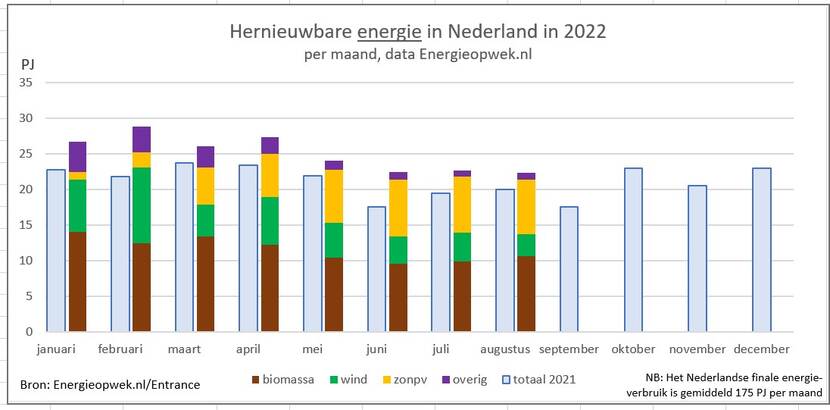According to the latest data released by Energieopwek.nl, in August this year, the Dutch solar power generation can meet about 25.5% of the total electricity demand in the Netherlands. Energieopwek.nl is controlled by a consortium of Hans University Groningen, Tennet, Gasunie and Netbeheer Nederland.
The increase in the proportion of solar energy is mainly caused by the following three factors: the increase in the number of photovoltaic facilities connected to the Internet throughout the year; the decline in electricity demand; and the increase in sunshine hours. According to Energieopwek.nl, the Royal Netherlands Meteorological Institute (KNMI) recorded 289 hours of sunshine in August, compared to the monthly average of 205 hours throughout the year. August was the second sunniest month on record.

In August, solar was the second-largest source of electricity after “conventional energy” (which met 51.9% of demand). The third largest source of electricity is biomass (12.3%), followed by onshore wind (5.6%) and offshore wind (4.5%). Hydropower has the lowest share at 0.1%.
Combined, renewables accounted for 48%, compared to 42% in August 2021. The French climate agreement (Klimaatakkoord) sets a target of 70% renewable energy by 2030.
According to data from the Netherlands Central Statistics Office, by the end of 2021, the cumulative installed photovoltaic capacity of the Netherlands will reach 14.3GW. A recent report by the Netherlands Organization for Applied Scientific Research (TNO) stated that by 2050, the Netherlands will have 132 GW of photovoltaic power generation.
Source: www.pv-magazine.com
This content is protected by copyright and may not be reused. If you want to cooperate with us and would like to reuse some of our content, please contact: [email protected].
